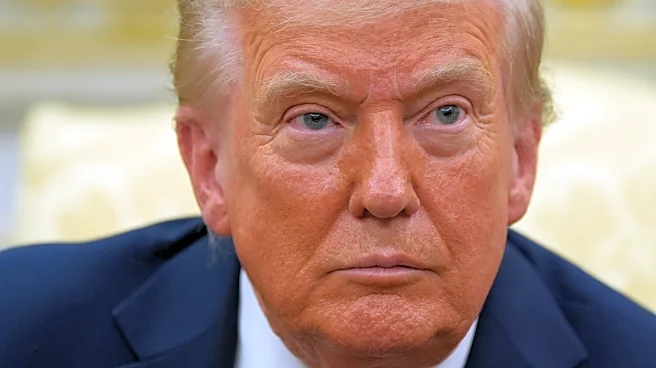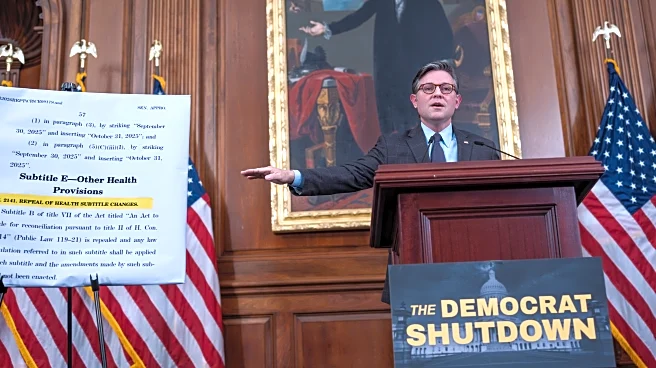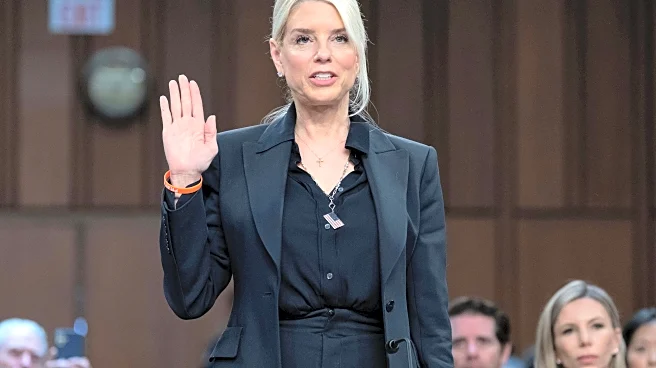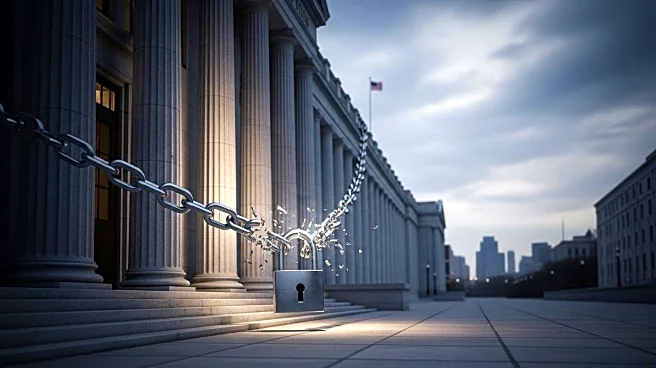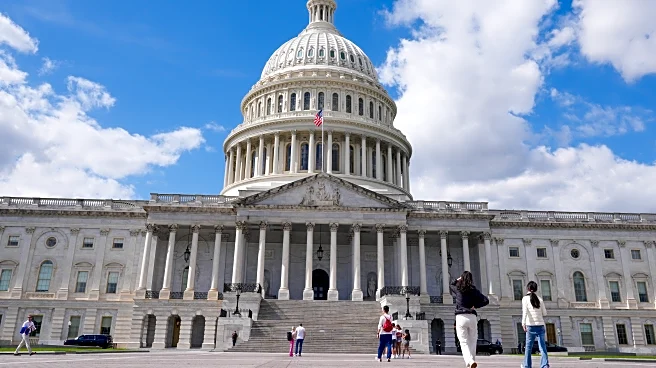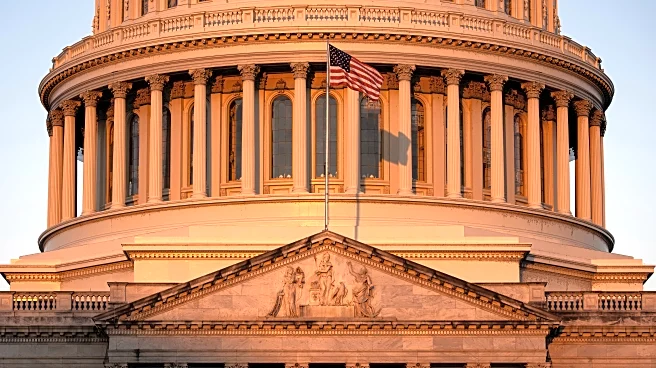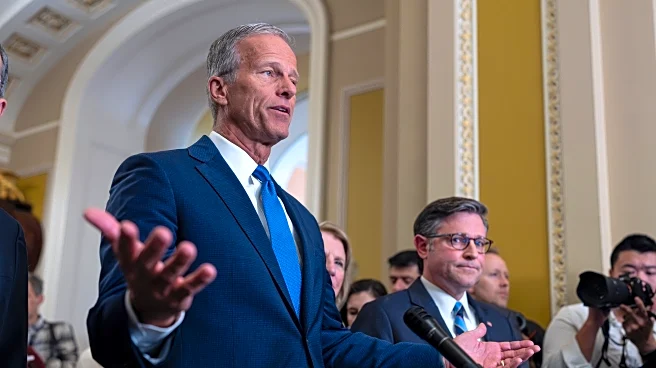What's Happening?
The White House has commenced significant federal workforce reductions as the government shutdown enters its tenth day. According to the White House budget office, these cuts are part of a reduction-in-force strategy aimed at downsizing the federal government. The Office of Management and Budget Director, Russ Vought, confirmed the initiation of these plans but did not specify the number of workers or agencies affected. The shutdown has resulted in 700,000 federal workers receiving partial paychecks, with further pay halted until a resolution is reached. House Speaker Mike Johnson expressed frustration, blaming Democrats for the impasse, while Democrats accuse Republicans of being inactive. The Senate has failed to advance funding proposals, with Democrats demanding reversals of Medicaid changes and extensions of tax credits under the Affordable Care Act.
Why It's Important?
The federal workforce cuts have significant implications for government operations and services. Essential services such as health and nutrition aid, as well as FEMA's ability to issue flood insurance, are disrupted. The shutdown affects not only federal employees but also the broader public relying on these services. The political standoff highlights deep divisions between Republicans and Democrats, impacting public policy and governance. The economic consequences are substantial, with federal workers facing financial uncertainty and potential long-term job losses. The situation underscores the challenges in reaching bipartisan agreements on budgetary and healthcare issues, affecting millions of Americans.
What's Next?
If the shutdown persists, the White House plans to make permanent cuts, targeting programs not aligned with President Trump's priorities. This could lead to further reductions in federal services and programs, exacerbating the impact on public welfare. Political leaders may continue negotiations to resolve the impasse, but the timeline remains uncertain. The ongoing shutdown may prompt increased public pressure on lawmakers to reach a compromise. Stakeholders, including federal employees and service recipients, are likely to advocate for a swift resolution to restore government operations and services.
Beyond the Headlines
The workforce cuts and shutdown reflect broader political and economic tensions in the U.S. The situation raises ethical questions about the use of government shutdowns as a political tool and the impact on vulnerable populations. Long-term shifts in public policy and governance may result from the current standoff, influencing future budget negotiations and healthcare reforms. The shutdown highlights the need for effective bipartisan collaboration to address critical national issues, including healthcare and economic stability.

